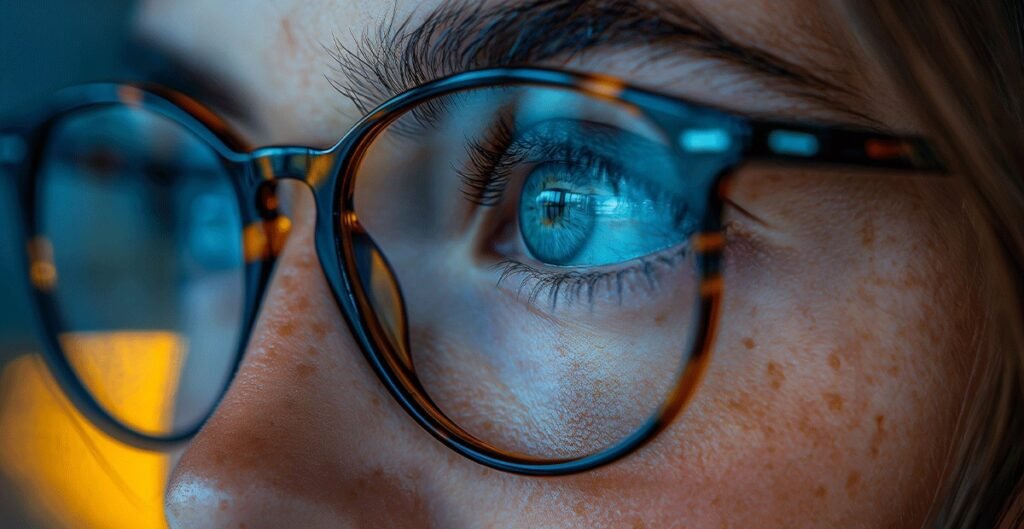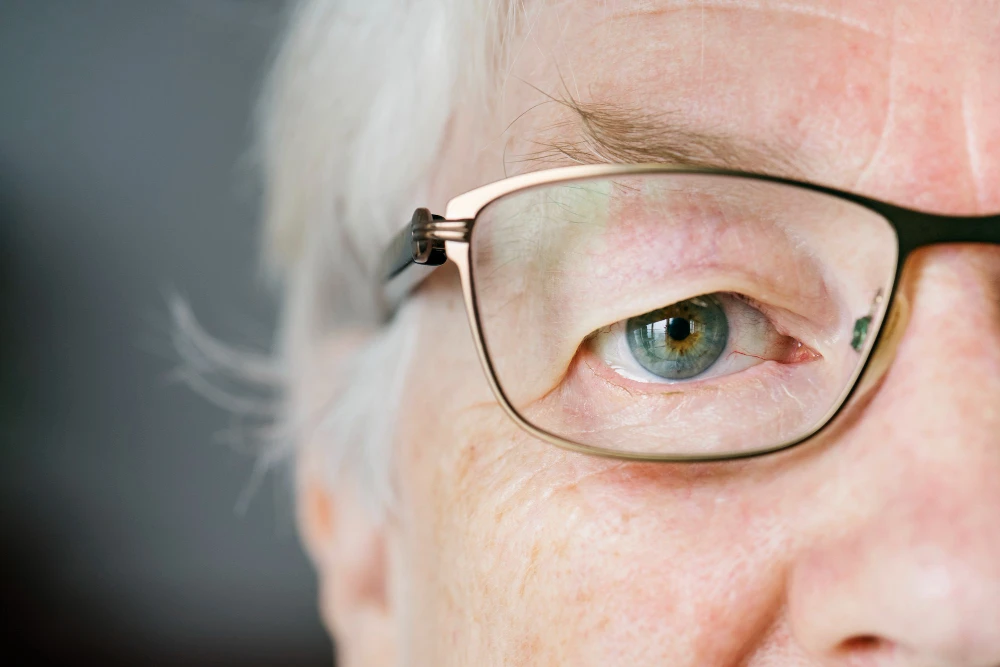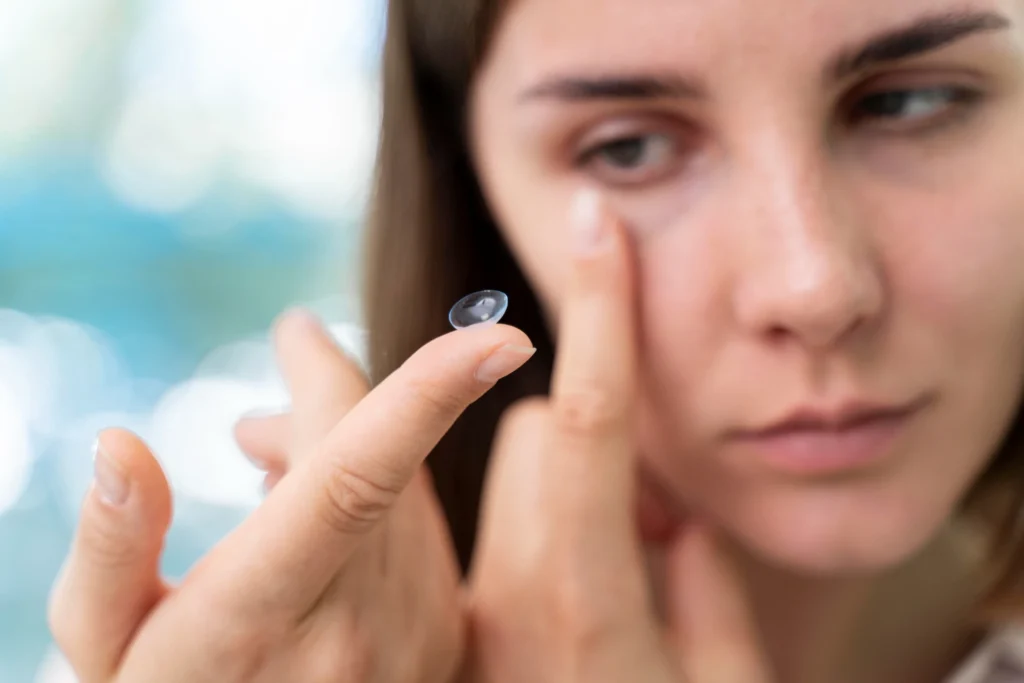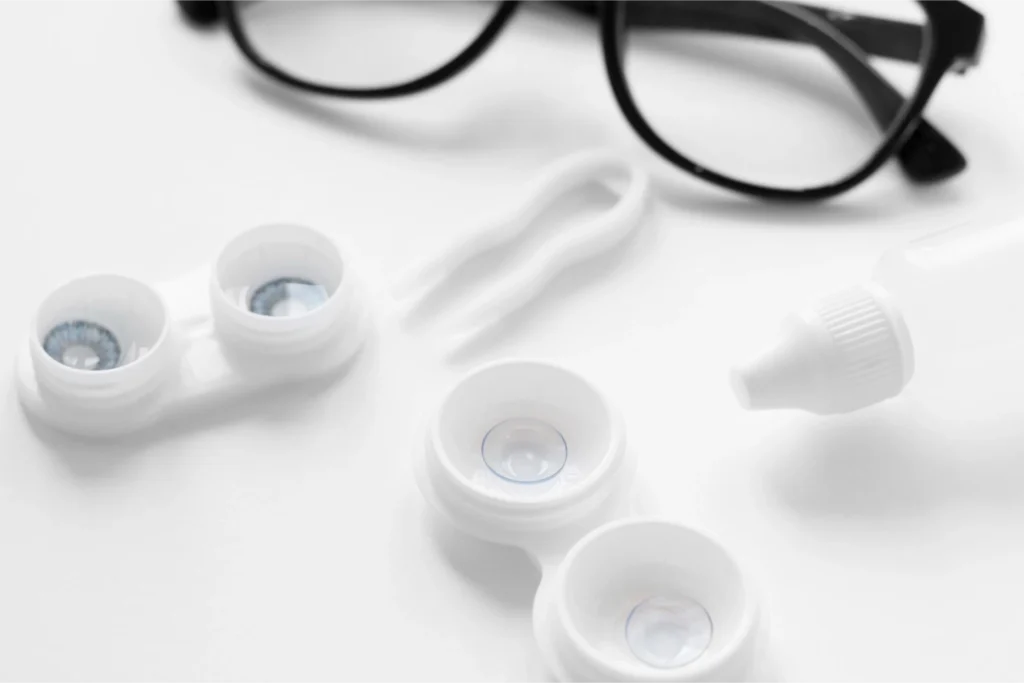Blue light is a high-energy, short-wavelength light that is part of the visible light spectrum. While the sun is the primary source of blue light, digital devices such as smartphones, tablets, and computer screens also emit significant amounts. With the increasing use of digital screens for work, entertainment, and communication, concerns have grown regarding the potential impact of prolonged exposure to blue light on eye health and overall well-being.For those experiencing vision discomfort, specialized eyeglasses designed to reduce digital eye strain can provide relief.
Digital Eye Strain
Digital eye strain, also known as computer vision syndrome, encompasses a range of eye and vision-related problems resulting from prolonged use of digital devices. Symptoms often include:
- Dry eyes
- Blurred vision
- Headaches
- Neck and shoulder pain
- Difficulty focusing
These symptoms are commonly linked to extended screen time, improper screen brightness, reduced blinking, and poor posture while using devices. Given the widespread use of screens in daily life, finding effective ways to manage and reduce eye strain has become a priority for many individuals.
The Rise of Blue Light Glasses
With the increased prevalence of digital screens, blue light filtering glasses have gained popularity as a potential solution for reducing digital eye strain. These glasses are designed to block or filter out a portion of the blue light emitted by screens, aiming to minimize discomfort and improve visual comfort. Many manufacturers claim that blue light glasses help prevent eye fatigue, reduce strain, and even enhance sleep quality by limiting exposure to blue light, which can interfere with melatonin production and disrupt sleep cycles.
Do Blue Light Glasses Really Work?
Despite their growing popularity, the effectiveness of blue light glasses remains a topic of debate. Many experts argue that digital eye strain is caused primarily by prolonged focus on screens rather than blue light exposure itself. Factors such as decreased blinking, poor screen ergonomics, and extended screen time contribute more significantly to eye strain than blue light. As a result, while blue light glasses may offer some benefit in reducing glare, they may not be the ultimate solution to digital eye strain.
Common Myths About Blue Light Glasses
- Blue Light Glasses Completely Eliminate Eye Strain
While they can reduce some glare, they do not address other major causes of digital eye strain, such as screen glare, improper posture, or inadequate lighting. - They Improve Sleep Instantly
Blue light can disrupt sleep patterns, but wearing blue light glasses alone may not be enough to prevent sleep disturbances. Reducing screen time before bed and maintaining a proper nighttime routine are also important. - All Blue Light Glasses Are the Same
The effectiveness of blue light glasses varies based on the quality of the lenses. Some block only a small percentage of blue light, while others filter a higher percentage but may distort color perception.
Alternative Strategies to Reduce Eye Strain
Since the evidence on blue light glasses is mixed, it’s important to adopt additional strategies to minimize digital eye strain effectively. Consider the following approaches:
1. The 20-20-20 Rule
Spending long hours in front of a screen can strain your eyes and lead to discomfort. The 20-20-20 rule is a simple yet effective method to reduce eye fatigue. Every 20 minutes, take a 20-second break and look at something 20 feet away. This habit helps relax eye muscles, reduce tension, and prevent symptoms like dryness, headaches, and blurred vision. Setting a reminder or using apps designed for eye strain relief can help incorporate this routine into your daily workflow.
2. Optimize Screen Ergonomics
- Adjust Your Screen Position – Keep your screen at arm’s length and slightly below eye level to minimize strain.
- Control Screen Brightness – Avoid excessive brightness and consider using screen filters to reduce glare.
- Increase Text Size – Adjust font size and contrast to make reading easier.
3. Blink More Often
When focusing on digital screens, people tend to blink 50% less than usual, leading to dry, irritated, and red eyes. Blinking is essential because it spreads moisture across the eyes, keeping them hydrated. To counteract this, try:
- Conscious blinking – Remind yourself to blink more frequently, especially during intense screen work.
- Eye exercises – Gently closing and reopening your eyes several times can help refresh them.
- Humidifying your environment – Dry indoor air can worsen eye discomfort. Using a humidifier can help maintain eye moisture.
4. Use Artificial Tears.
If your eyes often feel dry or tired after prolonged screen use, lubricating eye drops or artificial tears can provide relief. These drops help replenish moisture and prevent irritation caused by reduced blinking. Consider:
- Preservative-free artificial tears for frequent use without causing additional irritation.
- Gel-based eye drops for longer-lasting hydration, especially before sleep.
- Doctor-recommended options if symptoms persist, as underlying issues like chronic dry eye may require specialized treatment.
5. Reduce Screen Time Before Bed
Limiting screen exposure at least an hour before bedtime can help regulate your body’s natural sleep cycle and improve sleep quality. If you must use screens at night, consider enabling night mode on your devices to reduce blue light emission.
6. Schedule Regular Eye Exams
Visiting an eye care professional regularly can help detect any underlying vision problems contributing to digital eye strain. An optometrist can recommend customized solutions, including prescription glasses if needed.
Take Action for Healthier Vision
If you spend hours in front of a screen daily, implementing eye-friendly habits is crucial. Instead of relying solely on blue light glasses, focus on practical strategies like the 20-20-20 rule, maintaining proper screen ergonomics, and staying hydrated. Protecting your eyes is an ongoing process, and small changes can significantly impact your long-term vision health.
If you’re experiencing persistent eye discomfort or need expert guidance, visit Vision Gallery today. Our specialists are ready to help you find the best solutions for comfortable and strain-free vision.






